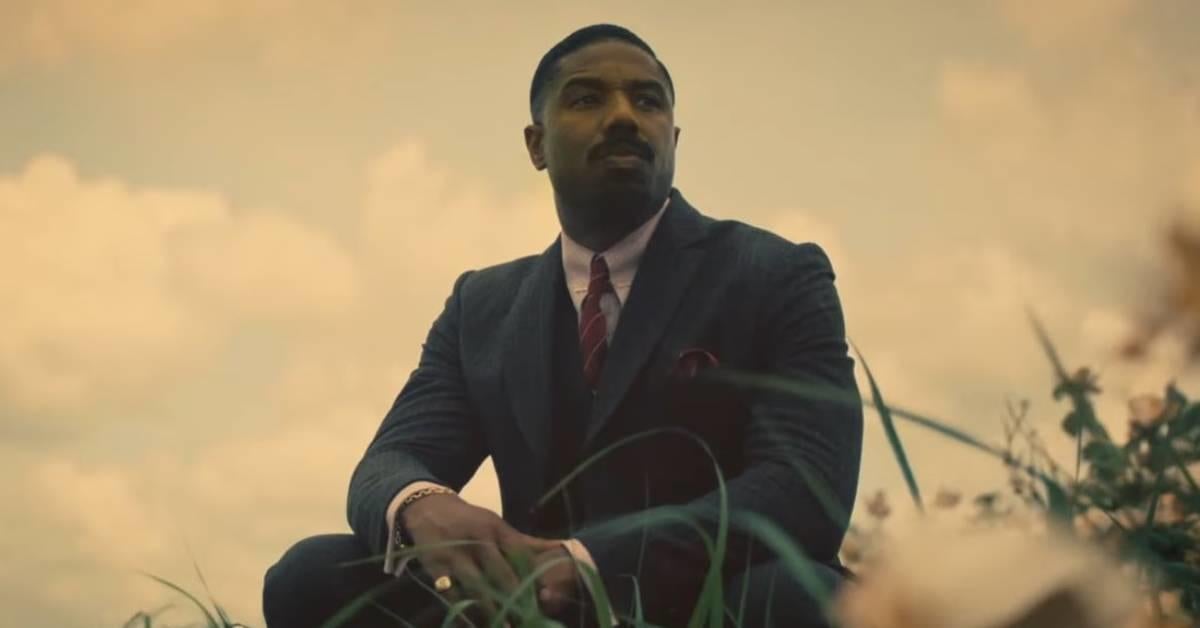
Ryan Coogler’s movie titled “Sinners” premiered recently and has swiftly gained both critical acclaim and commercial success. The film skillfully merges supernatural horror with the gritty history of the American South, particularly the Mississippi Delta in 1932. Michael B. Jordan, a frequent collaborator of Coogler’s, delivers a remarkable performance in a dual role. The setting is a world immersed in blues music, oppressive Jim Crow laws, and bloodsucking creatures. With its potent blend of historical accuracy and genre suspense, viewers have been left wondering: Is “Sinners” based on actual events? The simple response is no, as the narrative revolving around twin brothers, vampires, and a haunted juke joint was conceived entirely by Coogler’s creativity. However, disregarding it as mere fiction overlooks the grim historical truth that forms “Sinners“‘s chilling backdrop.
WARNING: Spoilers below for Sinners
As a passionate cinephile, I must say that Ryan Coogler’s latest work, “Sinners,” differs significantly from his previous acclaimed projects like “Fruitvale Station,” the “Creed” series, and “Black Panther.” Unlike those films based on true stories or franchises, “Sinners” is his first original blockbuster screenplay. The story revolves around twin brothers, Elijah “Smoke” Moore and Elias “Stack” Moore, portrayed by Michael B. Jordan, who leave their dangerous life with gangsters in Chicago to return to their Mississippi hometown. Their aim is to create a juke joint, a safe haven for Black communities, threatened daily by racial violence and segregation. However, their aspirations lead them into a confrontation not only with the local Ku Klux Klan but also with an ominous supernatural force in the form of vampires haunting the Delta region.
In “Sinners,” Coogler intentionally blends horror with aspects of drama, action, music, and southern gothic suspense. This versatile genre structure is crucial to the film’s investigation into the actual terrors experienced by African Americans during that time, employing the well-known motif of vampires to delve into themes of sin, abuse, struggle for existence, and ownership in a harsh environment.
Mississippi Under Jim Crow: Sinners‘ Historical Setting

1932 saw the chosen setting for Sinners as the Mississippi Delta, a region characterized by the oppressive Jim Crow system of laws. After the Reconstruction era, these state and local laws enforced harsh racial segregation and discrimination against African Americans. In Mississippi, as in many Southern states, Jim Crow controlled almost every aspect of public and private life. Segregation was mandatory in schools, public transport, hospitals, eateries, restrooms, water fountains, and even cemeteries. “Whites Only” and “Colored” signs were ubiquitous, reinforcing the ideology of white supremacy. Mississippi’s laws were exceptionally strict, outlawing interracial marriage and punishing any suggestion of social equality between races.
In addition to being denied equal rights, African Americans faced systematic voter suppression. Mississippi was a pioneer in enacting tactics such as poll taxes and literacy tests, which were biased against Black males, restricting their right to vote and thus limiting their political influence. Furthermore, economic oppression was prevalent, especially within the agricultural economy of the Delta region. The sharecropping and tenant farming systems kept many Black families in debt cycles controlled by white landowners, providing few opportunities for financial progression. Regrettably, the Great Depression worsened these circumstances, leading to increased impoverishment, displacement, and fierce competition for even low-paying jobs.
In addition to the persistent pressure from laws and financial struggles, there was always the looming danger of racial aggression. Groups like the Ku Klux Klan, infamous for their actions, employed terror and violence to preserve the racial order, frequently with the tacit or open backing of local administrations. This environment of relentless fear, legal subordination, and economic distress shaped the actual past that serves as a backdrop for the characters in Sinners.
As a devoted cinema enthusiast, I must say that “Sinners” shines a light on an intriguing aspect of the era’s culture: the significant role played by the Chinese community in the Delta region as a cultural bridge. It’s mind-blowing to discover that fictional characters like Bo and Grace Chow (portrayed by Yao and Li Jun Li) and their store mirror real-life history. This close-knit Chinese immigrant community was unique in being accepted on both sides of the racial divide, providing goods and services to the local black community that might have been otherwise unavailable. The depth of cultural research Ryan Coogler undertook to craft the world and characters of this film is evident in these details.
Why Is Delta Blues So Important to Sinners?

In the challenging times of the Jim Crow South, unique expressions of Black culture thrived, offering comfort, unity, and defiance. The Delta blues, a genre originating in Mississippi’s Delta region, plays a significant role in the ambiance and narrative of Sinners. Tracing its roots back to earlier forms such as work songs, field hollers, and spirituals, the Delta blues evolved during the late 19th and early 20th centuries. It came to symbolize the region’s sound, marked by emotional vocals, acoustic guitar playing, and lyrics that mirrored the highs and lows of life under oppression.
trailblazing musicians such as Charley Patton, Son House, and Robert Johnson significantly molded the style of music depicted in the movie during their active or influential years in the 1930s. Furthermore, tales about characters like Robert Johnson, who was said to have traded his soul for musical prowess at a crossroads near Clarksdale, highlight the music’s strong roots in folklore and the supernatural – a theme that resonates with the storyline of Sinners.
Juke joints were vital hotspots where the Delta blues flourished, serving as social centers primarily in rural areas, housed within humble shacks or adapted buildings. In a segregated society, they offered precious spaces for Black communities to gather freely, socialize, dance, drink, and enjoy live music, away from white supervision. They were sanctuaries of solace, joy, and cultural pride. As portrayed in the film Sinners, setting up a juke joint symbolized entrepreneurship and community-building within an oppressive system. These spots provided musicians with a platform to exchange styles, hone their skills, and offer entertainment and escape for patrons struggling daily in the Delta’s challenging life.
Sinners‘ Hoodoo Is a Real Spiritual Practice

In the rich tapestry of Sinners, Hoodoo stands out as a prominent cultural thread. Hoodoo, often referred to as conjure or rootwork, is a unique blend of African American folk magic and spiritual practices that evolved from West African religious customs brought over during the Atlantic slave trade. Over time, it absorbed aspects of Native American herbal wisdom, European folk magic, and Christian beliefs, especially incorporating verses from the Bible. Primarily developed within enslaved communities in the Southern United States, its practice persisted and flourished even during the Jim Crow era.
Hoodoo is more of a pragmatic approach to dealing with everyday life’s hurdles and aspirations, rather than a structured religion with defined doctrines or clergy. Those who practice it, known as rootworkers or conjure doctors, employ various items such as herbs, roots, minerals, animal parts, personal belongings, and spoken incantations or supplications to accomplish specific objectives. These objectives typically revolve around healing, safeguarding from harm or negative influences, attracting love or wealth, ensuring fairness, or increasing power in difficult circumstances. During the times of slavery and later Jim Crow, Hoodoo served as a means for people to seek protection against violence, influence situations where formal power was limited, and preserve links to ancestral wisdom and spiritual resilience.
How did you find it interesting that Sinners incorporated genuine historical events into a terrifyingly fictional narrative? Feel free to share your thoughts below!
Read More
- Forza Horizon 5 Update Available Now, Includes Several PS5-Specific Fixes
- Gold Rate Forecast
- ‘The budget card to beat right now’ — Radeon RX 9060 XT reviews are in, and it looks like a win for AMD
- Masters Toronto 2025: Everything You Need to Know
- We Loved Both of These Classic Sci-Fi Films (But They’re Pretty Much the Same Movie)
- Valorant Champions 2025: Paris Set to Host Esports’ Premier Event Across Two Iconic Venues
- Karate Kid: Legends Hits Important Global Box Office Milestone, Showing Promise Despite 59% RT Score
- Eddie Murphy Reveals the Role That Defines His Hollywood Career
- Discover the New Psion Subclasses in D&D’s Latest Unearthed Arcana!
- Street Fighter 6 Game-Key Card on Switch 2 is Considered to be a Digital Copy by Capcom
2025-04-28 20:32